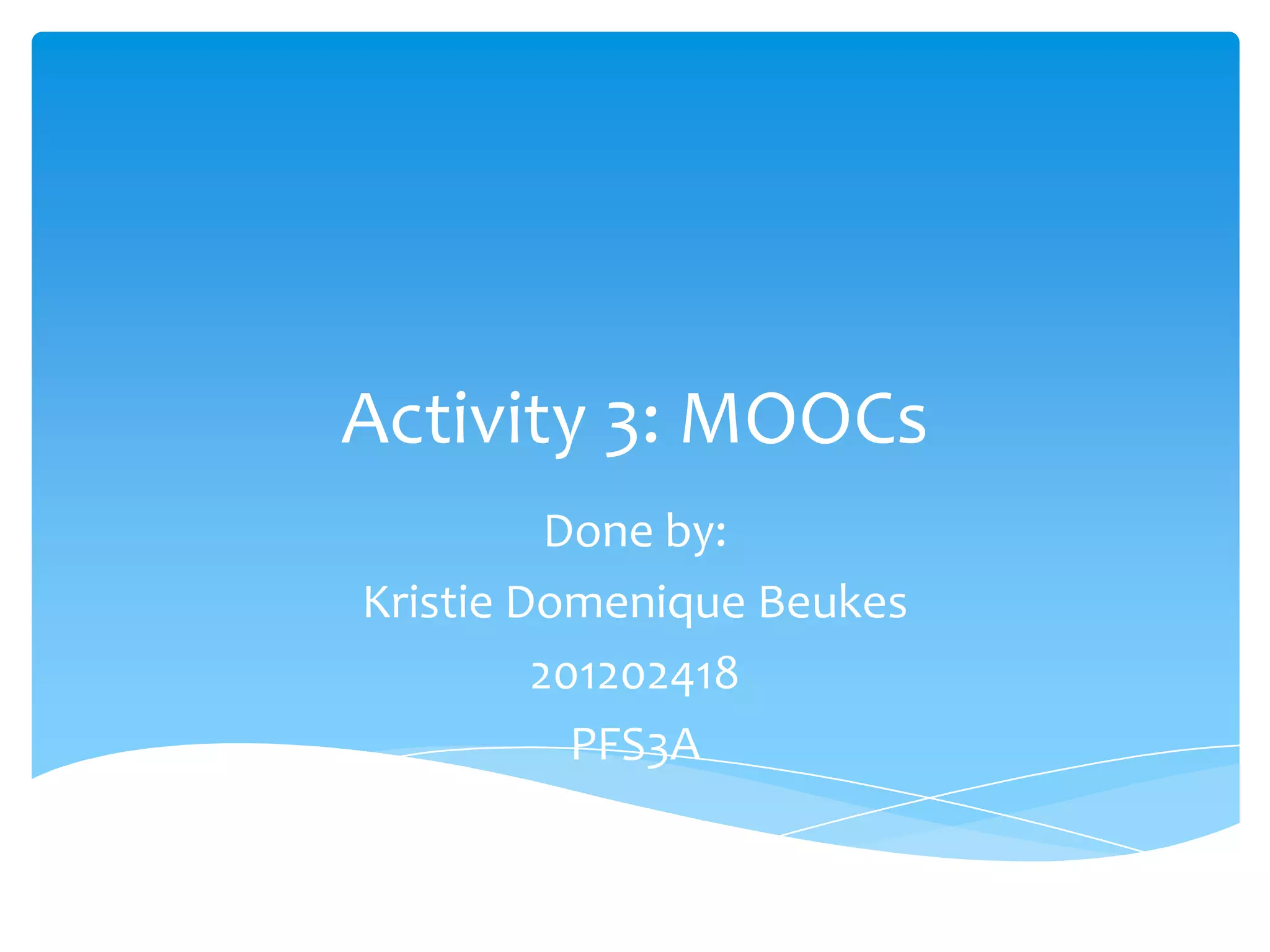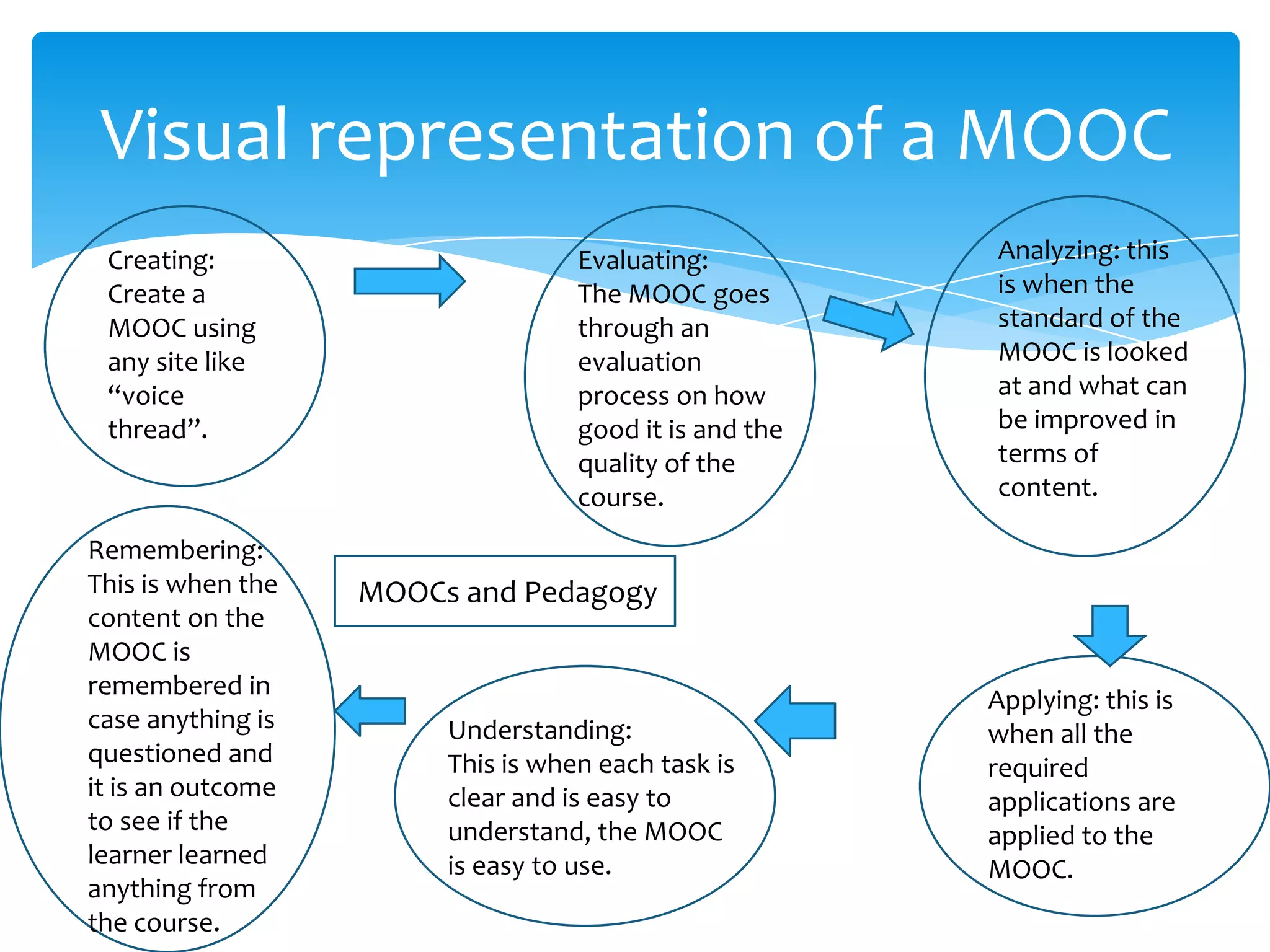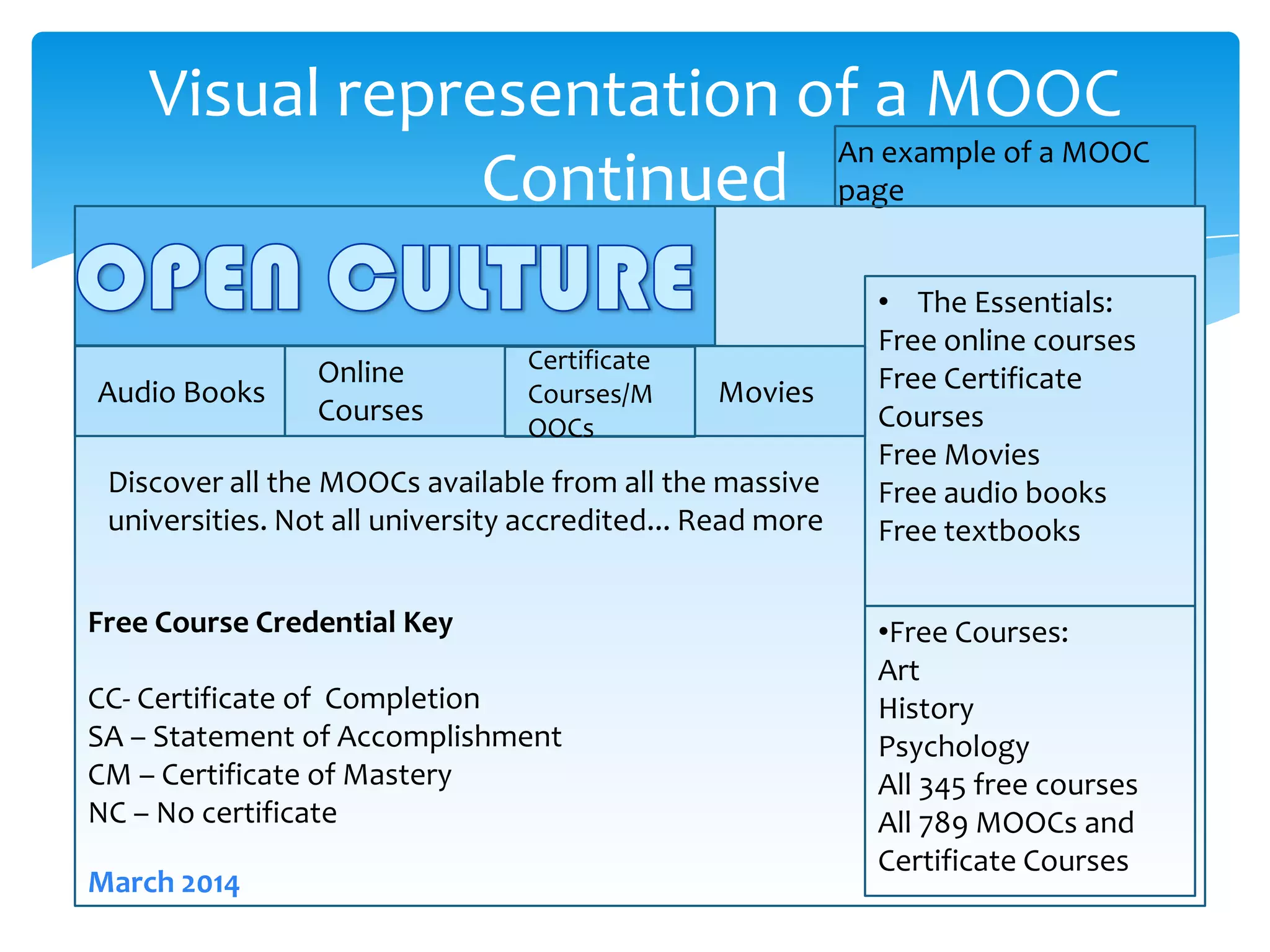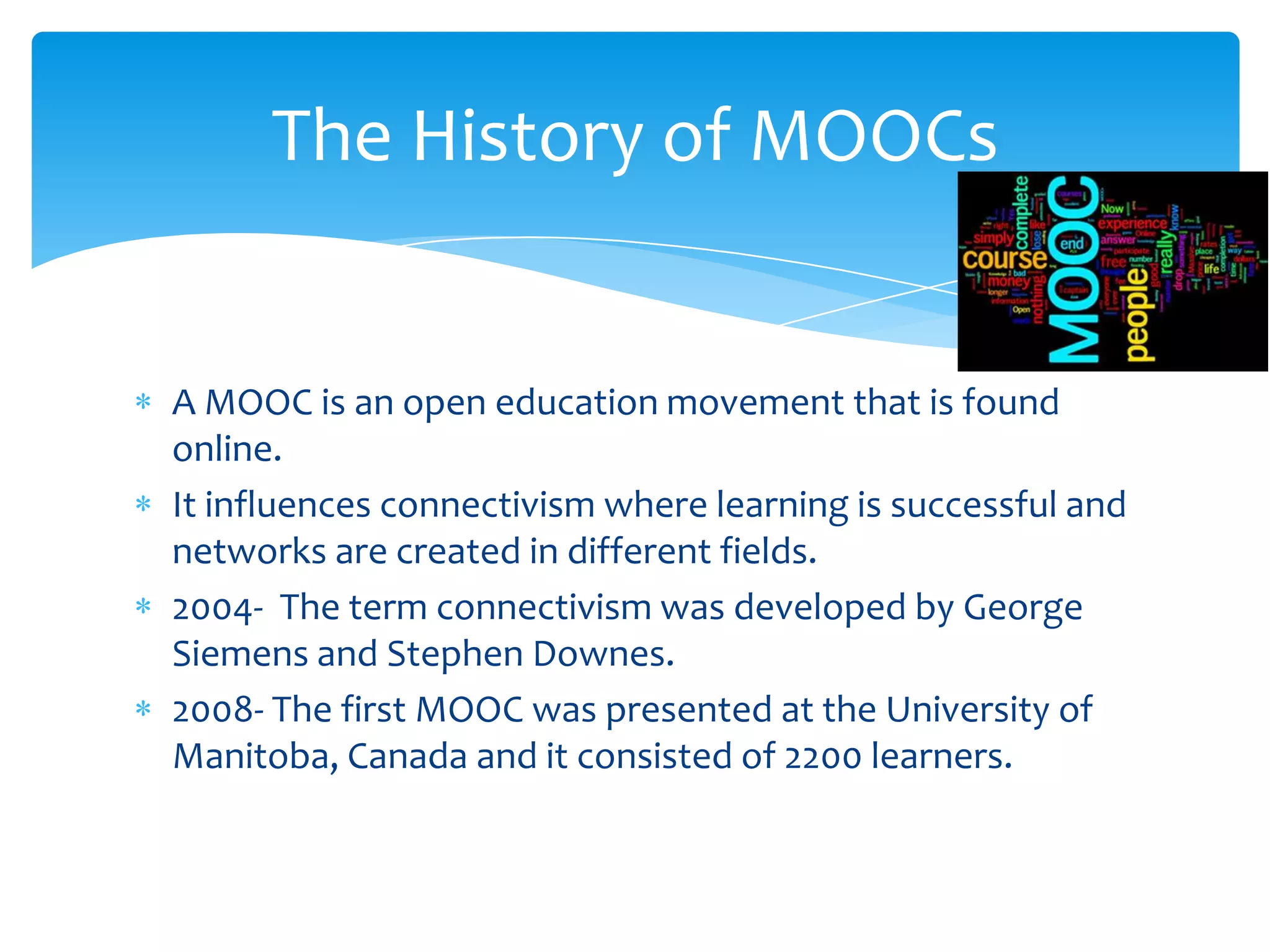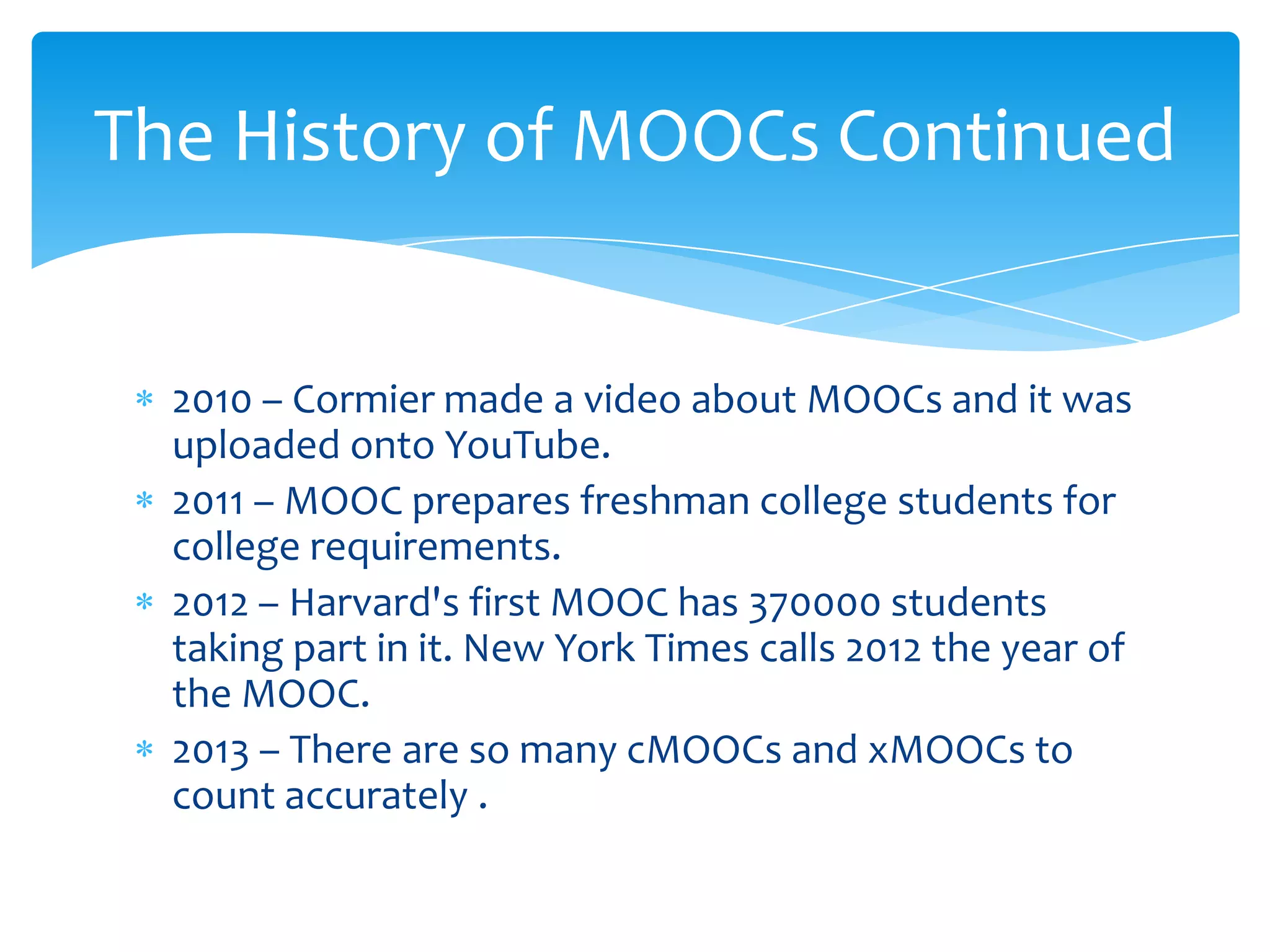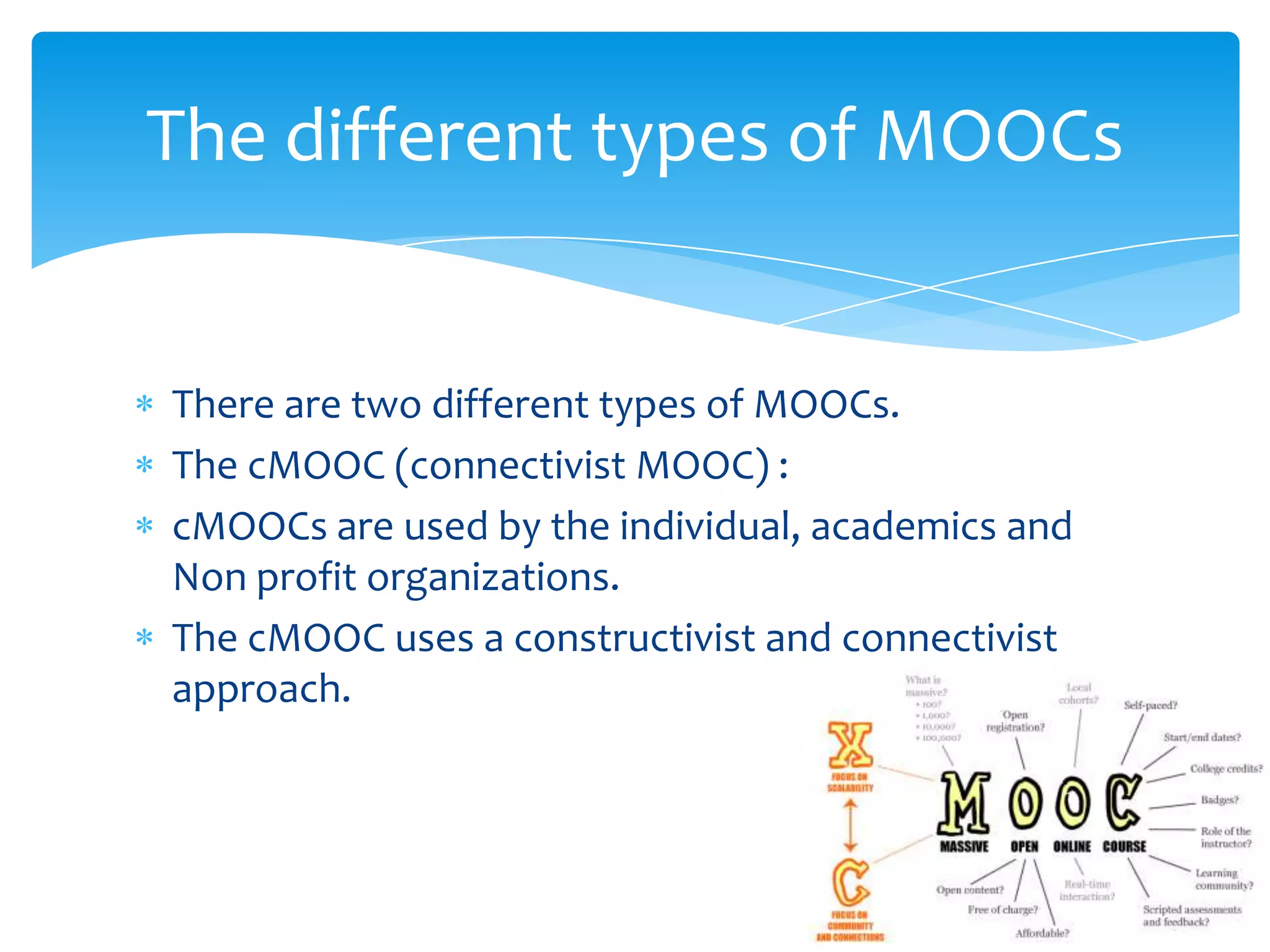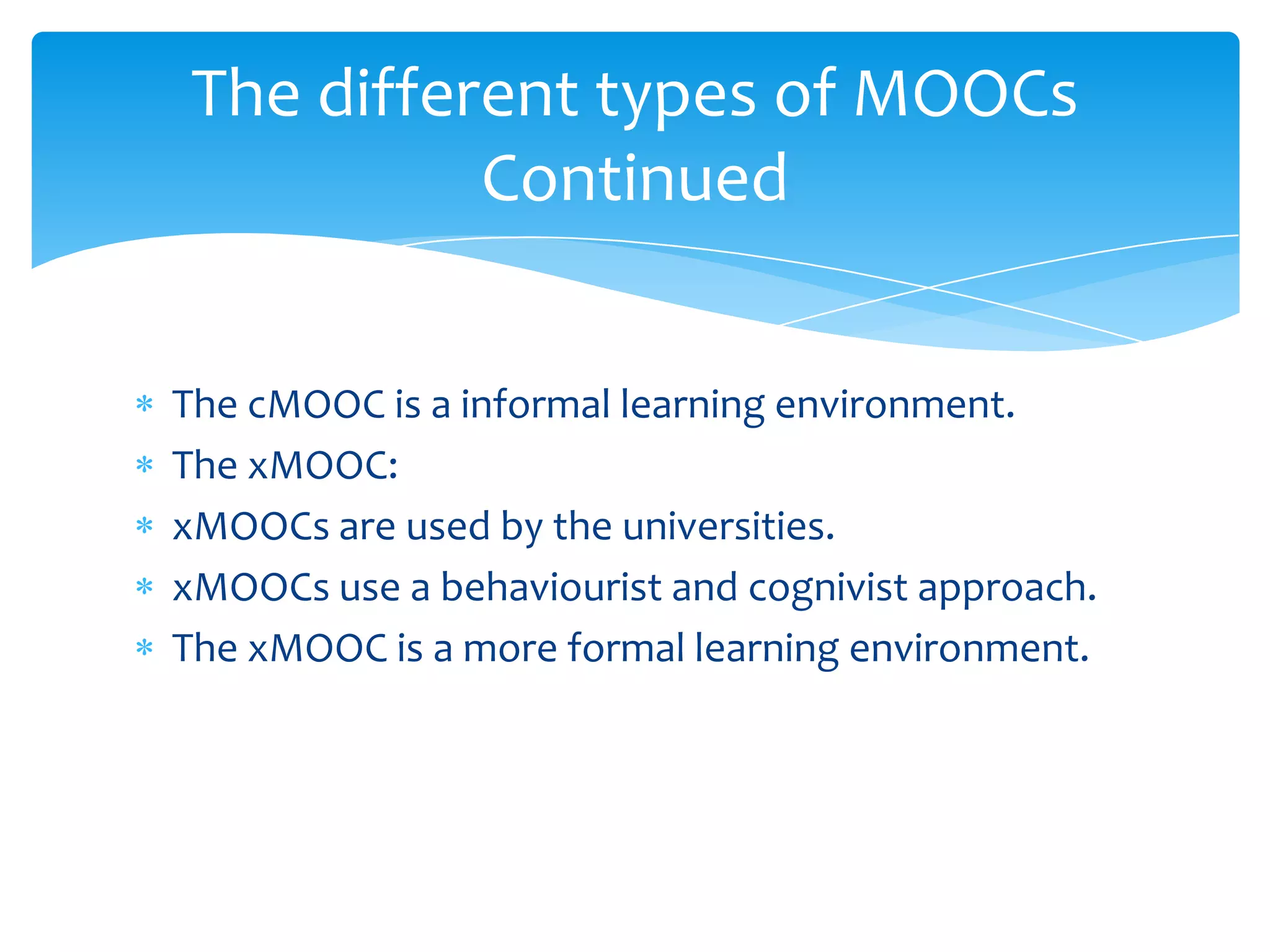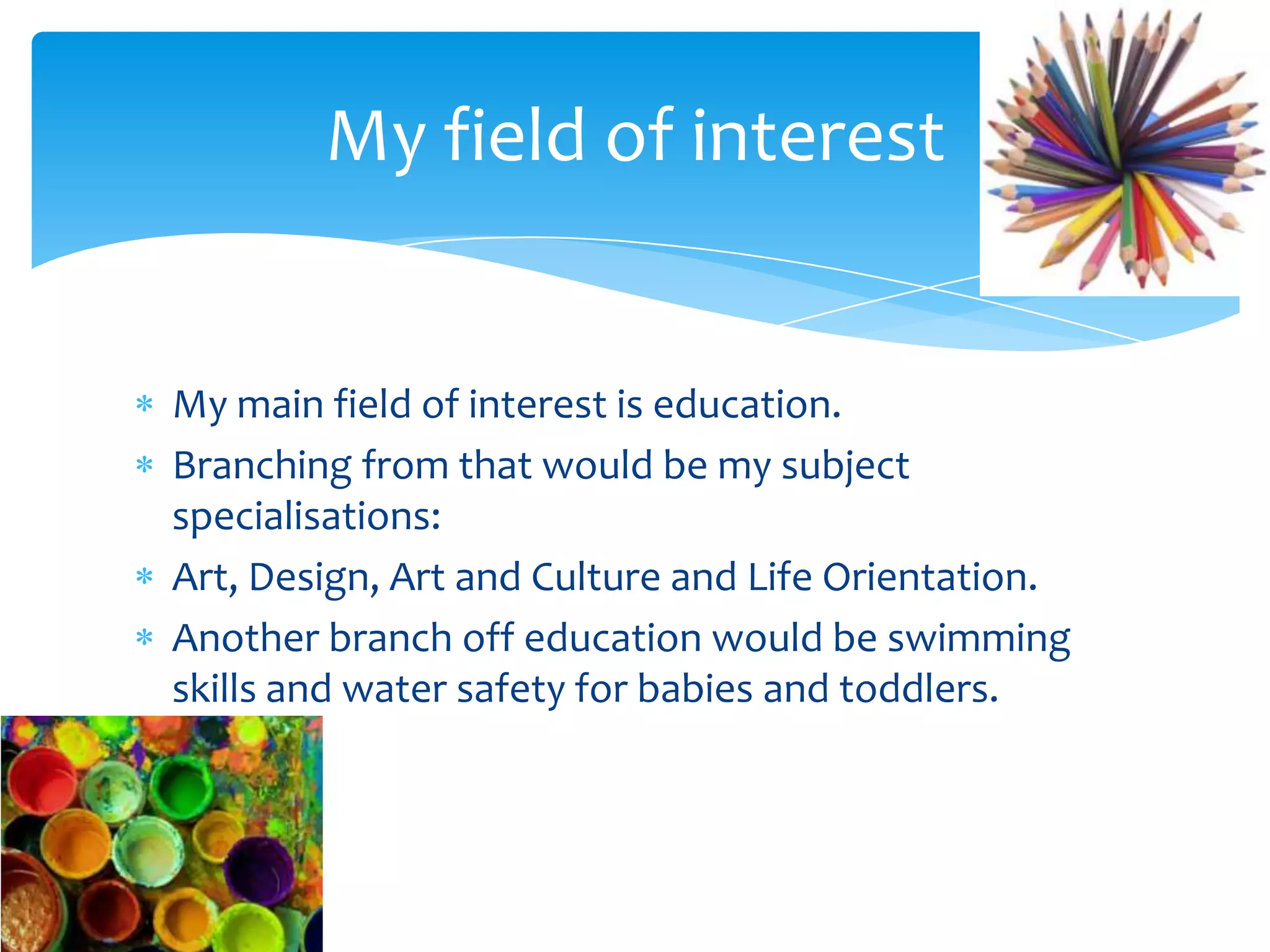This document discusses MOOCs (Massive Open Online Courses). It provides a visual representation of a MOOC and its key components: creating, evaluating, analyzing, applying, understanding, and remembering. It then discusses the history and evolution of MOOCs from 2004 to present day. It outlines the two main types of MOOCs: cMOOCs (connectivist MOOCs) and xMOOCs. cMOOCs use a constructivist and connectivist approach while xMOOCs use a behaviorist and cognitivist approach. The document also lists the author's main fields of interest and topics they would like to pursue in future MOOC experiences.
